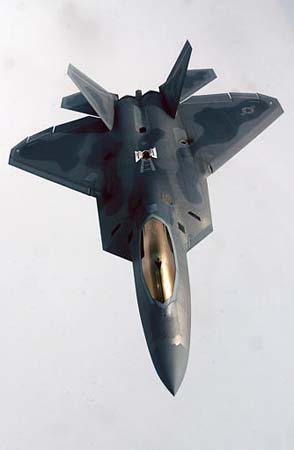The  Administration is asking Congress to provide the Air Force with $117 billion next fiscal year to sustain its fleet for the current fight, build a new inventory, and take care of its personnel. The total is $8.6 billion, or roughly eight percent, higher compared to what Congress approved in Fiscal 2008, but the rising costs of fuel and doing business, in general, eat up a good portion of that proposed increase, USAF officials said. When factoring non-blue accounts, USAF’s total obligation authority in Fiscal 2009 would rise to $143.9 billion, compared to $134.6 billion in Fiscal 2008. There are no real surprises in the new budget proposal, which went to Capitol Hill yesterday. The big-ticket aircraft and satellite projects stay on course, with no major cut backs or cancellations. There’s no money for F-22s beyond 183 or C-17s beyond 190. But neither is there funding included to shut down those lines, meaning USAF is leaving its options open. USAF asks for $41 billion for modernization, an increase of $3.6 billion compared to Fiscal 2008, $37.6 billion for personnel (plus $1.7 billion), and $33.2 billion for readiness (plus $3.7 billion), and $5.2 billion for infrastructure (minus $400 million). The decline in infrastructure earmarks reflects the Air Force’s strategy to accept risk in that area to free up resources for modernization, the officials said. It seeks to buy 93 aircraft, two satellites, four space launch vehicles, and more than 7,700 missiles and bombs. (For more on the budget, read By the Numbers)
Administration is asking Congress to provide the Air Force with $117 billion next fiscal year to sustain its fleet for the current fight, build a new inventory, and take care of its personnel. The total is $8.6 billion, or roughly eight percent, higher compared to what Congress approved in Fiscal 2008, but the rising costs of fuel and doing business, in general, eat up a good portion of that proposed increase, USAF officials said. When factoring non-blue accounts, USAF’s total obligation authority in Fiscal 2009 would rise to $143.9 billion, compared to $134.6 billion in Fiscal 2008. There are no real surprises in the new budget proposal, which went to Capitol Hill yesterday. The big-ticket aircraft and satellite projects stay on course, with no major cut backs or cancellations. There’s no money for F-22s beyond 183 or C-17s beyond 190. But neither is there funding included to shut down those lines, meaning USAF is leaving its options open. USAF asks for $41 billion for modernization, an increase of $3.6 billion compared to Fiscal 2008, $37.6 billion for personnel (plus $1.7 billion), and $33.2 billion for readiness (plus $3.7 billion), and $5.2 billion for infrastructure (minus $400 million). The decline in infrastructure earmarks reflects the Air Force’s strategy to accept risk in that area to free up resources for modernization, the officials said. It seeks to buy 93 aircraft, two satellites, four space launch vehicles, and more than 7,700 missiles and bombs. (For more on the budget, read By the Numbers)
House, Senate Unveil Competing Proposals for 2026 Budget
July 11, 2025
Lawmakers from the House and Senate laid out competing versions of the annual defense policy bill on July 11, with vastly different potential outcomes for some of the Air Force’s most embattled programs.